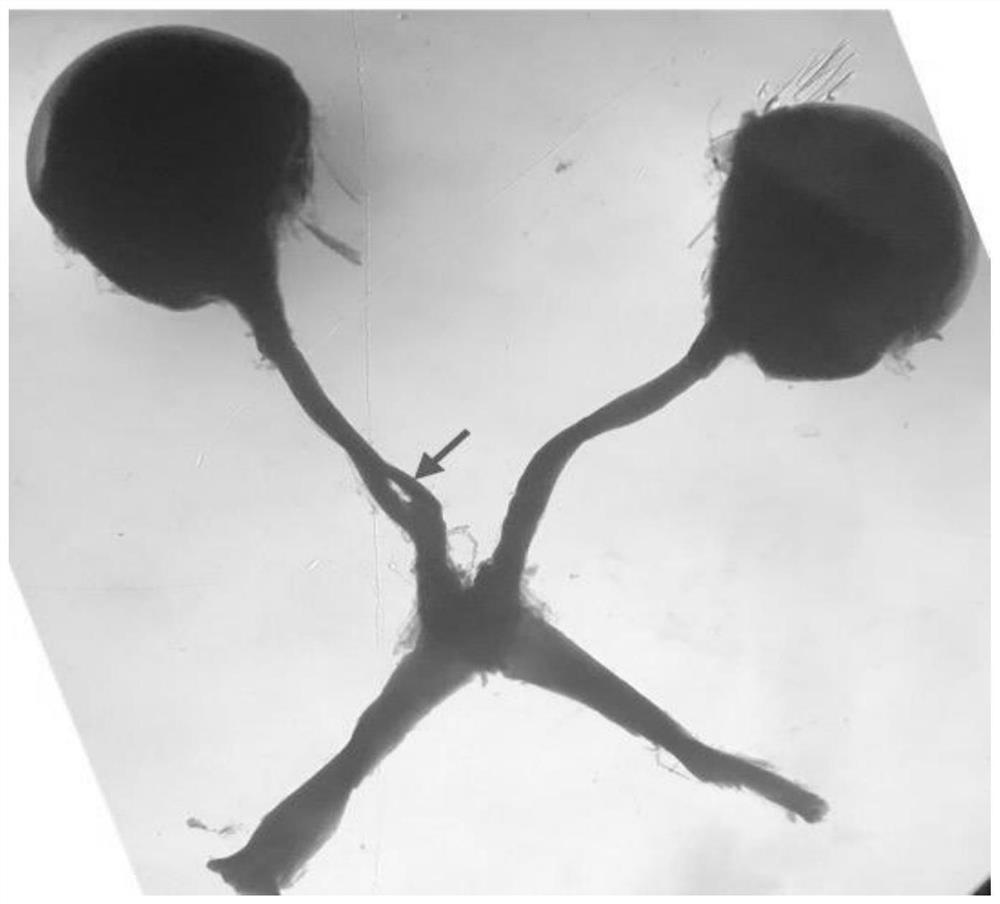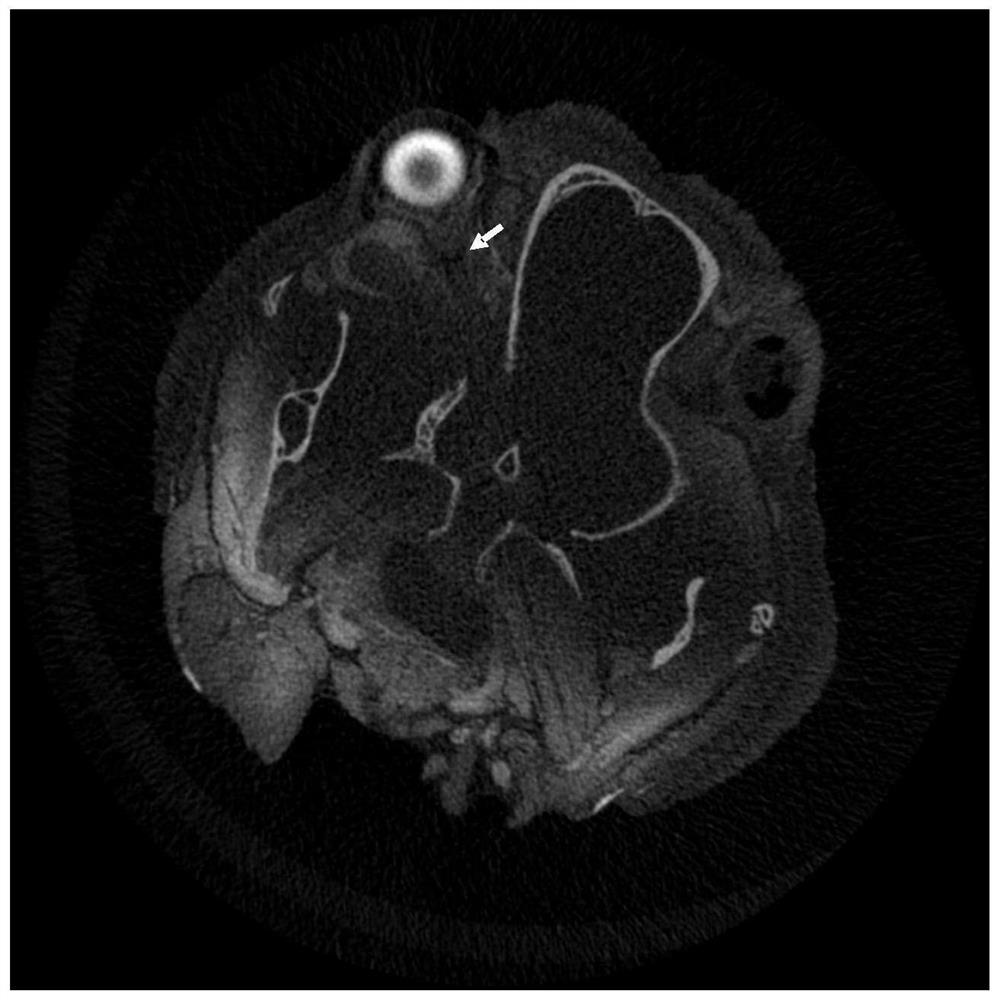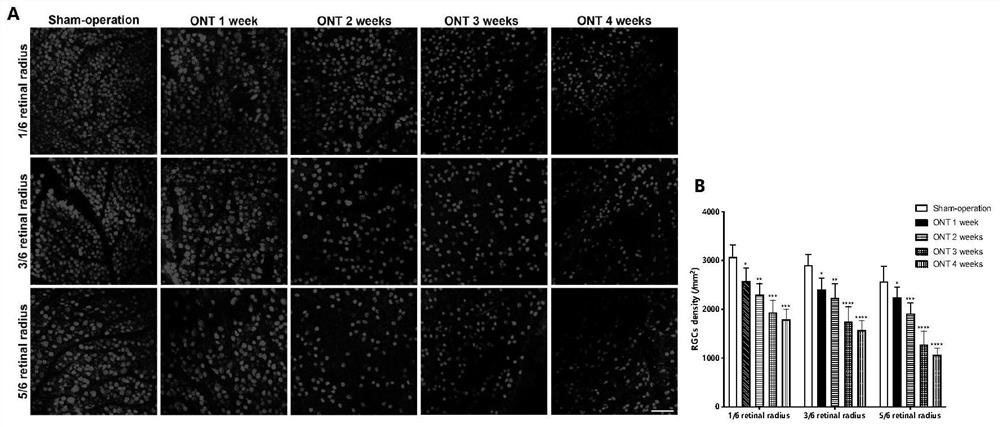Method for modeling mouse far-end optic nerve injury model through skull positioning puncture
An optic nerve injury and mouse technology, applied in medical science, veterinary instruments, veterinary surgery, etc., can solve the problems of modeling failure, distal optic nerve injury, high mortality, etc., and achieve a simple and easy modeling method. Effect
- Summary
- Abstract
- Description
- Claims
- Application Information
AI Technical Summary
Problems solved by technology
Method used
Image
Examples
Embodiment 1
[0035] The construction method of a mouse distal optic nerve injury model provided in this embodiment is as follows:
[0036] (1) Modeling environment: room temperature 22-24 ℃, well ventilated;
[0037] (2) Anesthesia: male 4-6 week BALA / C mice were injected intraperitoneally with 10 mg / kg of xylazine and 25 mg / kg of ketamine hydrochloride to anesthetize the mice;
[0038] (3) Skin preparation positioning: remove the hair on the top of the head, cut the skin on the top of the head, and bluntly separate the fascia to expose the anterior fontanelle. Use a cranial stereotaxic instrument to find the body surface position corresponding to the optic nerve. Starting from the anterior fontanel, move to the tail and right side respectively. Move 0.5mm as the needle entry point;
[0039] (4) Needle insertion: The 27G needle was inserted slowly. When the needle was inserted to about 3mm, a breakthrough was felt and the right eyeball fluttered. This was a reaction to the optic nerve inj...
experiment example 1
[0042] 1. The modeling effect of the ONT model constructed by skull puncture
[0043] 1) Survival rate: During the observation period of 4 weeks, among 180 mice modeled with ONT, 154 survived, and the survival rate was 85.56%.
[0044] 2) Success rate: 1 week after modeling, 20 mice were subjected to optic nerve separation and exposure, and observed under a microscope after fixation, 18 of them showed damage to the right distal optic nerve ( figure 1 ), the modeling success rate is estimated to be 90%. Another 20 mice were observed with microCT for optic nerve damage, and 19 of them had optic nerve damage ( figure 2 ), the modeling success rate is estimated to be 95%. Combining the two evaluation methods, the estimated modeling success rate is about 92.5%.
[0045] 2. Brn3a staining of retinal slices to observe the survival of retinal ganglion cells
[0046] 1, 2, 3, and 4 weeks after ONT modeling, retinal spread Brn3a staining showed that the density of RGCs in the 1 / 6, ...
PUM
 Login to View More
Login to View More Abstract
Description
Claims
Application Information
 Login to View More
Login to View More - R&D
- Intellectual Property
- Life Sciences
- Materials
- Tech Scout
- Unparalleled Data Quality
- Higher Quality Content
- 60% Fewer Hallucinations
Browse by: Latest US Patents, China's latest patents, Technical Efficacy Thesaurus, Application Domain, Technology Topic, Popular Technical Reports.
© 2025 PatSnap. All rights reserved.Legal|Privacy policy|Modern Slavery Act Transparency Statement|Sitemap|About US| Contact US: help@patsnap.com



